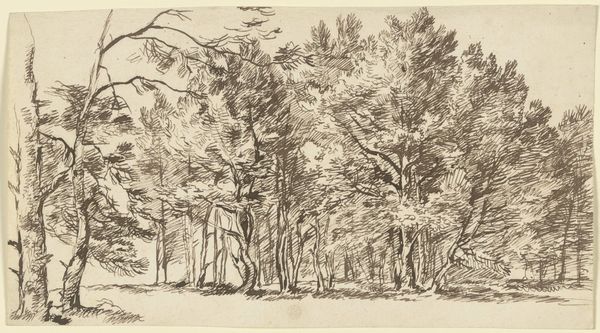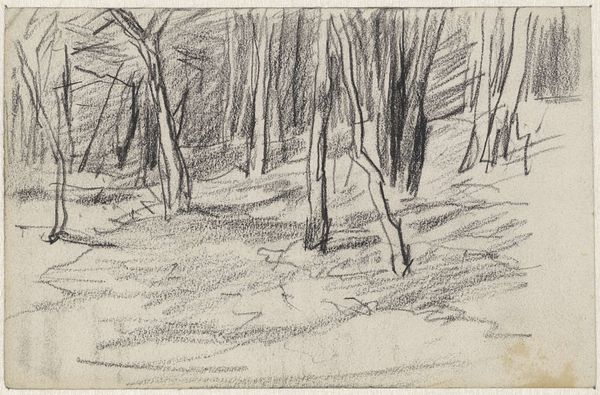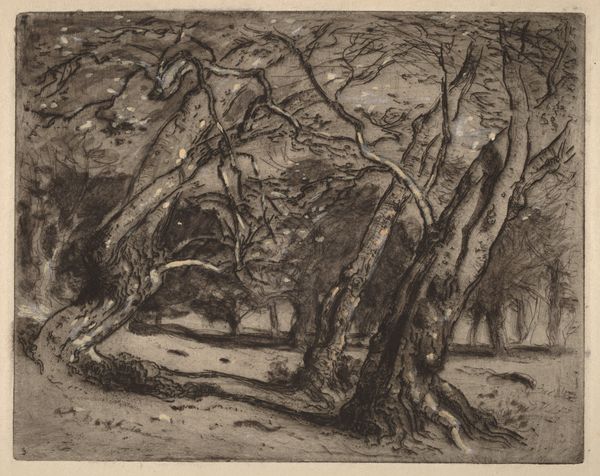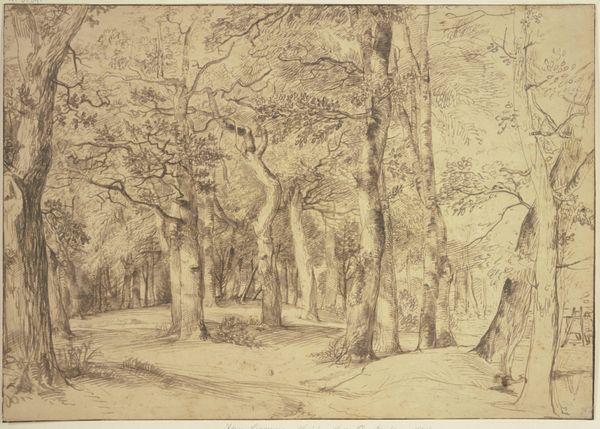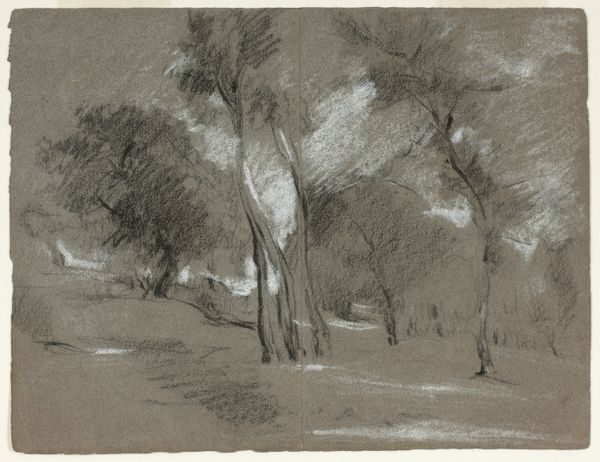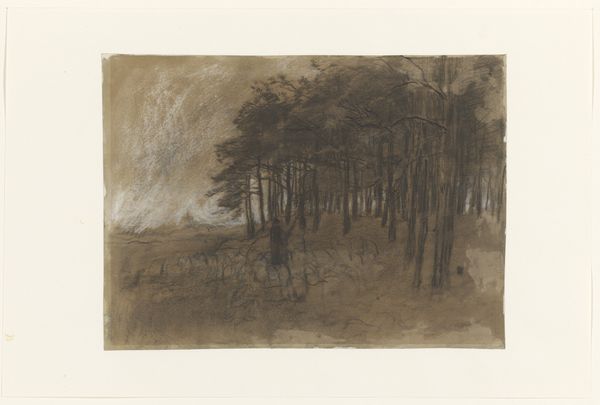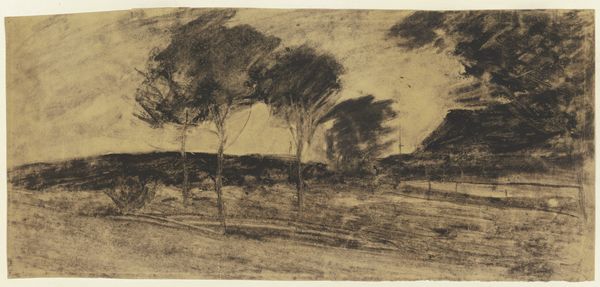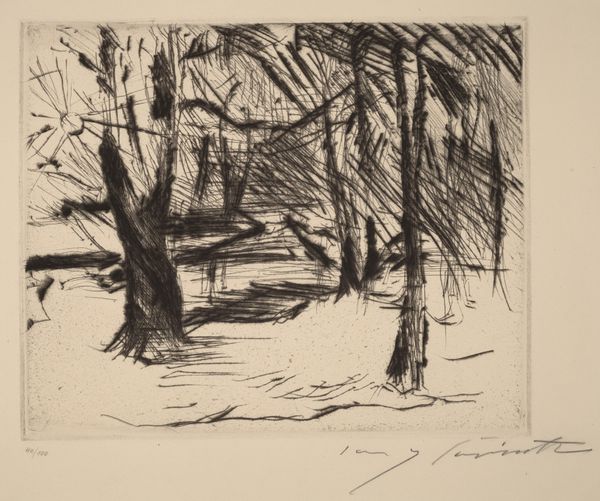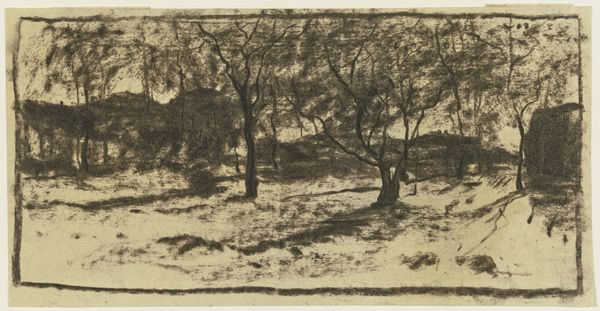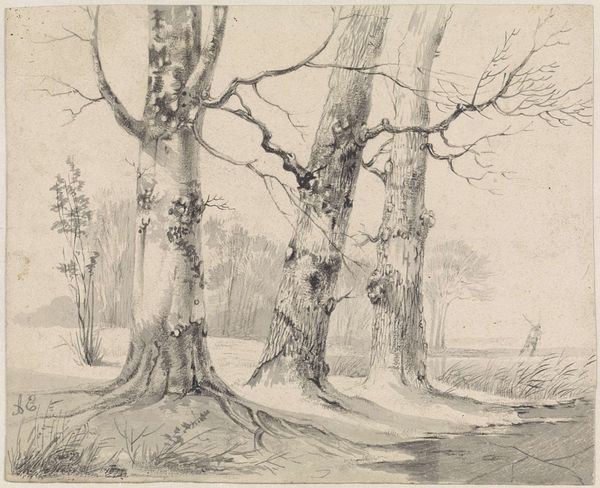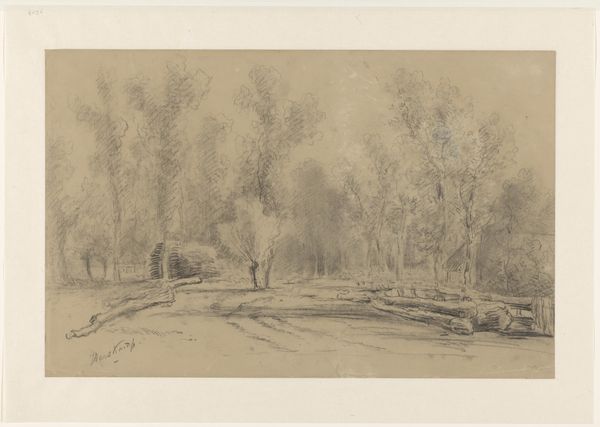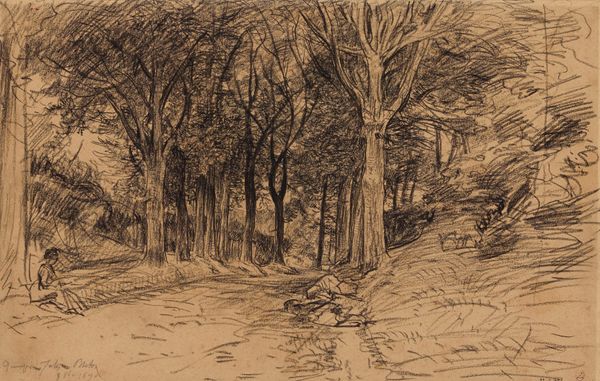
drawing, chalk
#
drawing
#
16_19th-century
#
landscape
#
romanticism
#
chalk
Copyright: Public Domain
Curator: I’m struck by the stark contrast in this drawing; it feels both inviting and foreboding at the same time. Editor: Indeed. Here we have Sion Longley Wenban's “Forest,” a chalk drawing characteristic of 19th-century Romanticism, currently held in the Städel Museum collection. Its artistic creation and historical placement encourage examination of both its form and societal impact. Curator: The limited use of light and shadow really enhances the mystery, doesn’t it? It conjures a sense of being lost or hidden, almost as if the trees are enclosing a secret. Considering Romanticism's focus on individual experience and emotion, I wonder how notions of societal alienation might factor into the landscape, or how it may depict humanity's relationship with the natural world. Editor: That's a crucial point. The composition definitely evokes an air of solitary introspection. The way the artist uses chalk adds to the textural and emotional depth, and while the forest is a timeless subject, the Romantic period frequently employed nature to comment on the burgeoning industrial age and societal constraints. Nature here could represent freedom, or equally a confrontation with the unknown. The dark palette really makes the imagery even more compelling. Curator: The scale also feels significant. It’s intimate, inviting close observation but is also grand due to its thematic exploration of the wild unknown, and invites interpretation within the socio-cultural narratives that shaped the epoch. Was Wenban influenced by political dynamics or other societal factors of the era? I would wonder how the depiction interacts with established art history in subtle forms of creative political subversion. Editor: Good questions. Without documented context on the artist's specific influences, our analyses inherently become speculative, though educated guesses based on prevailing sentiments still enrich appreciation. Wenban’s artistic contribution is a reminder of how cultural dialogues are created across the decades. Curator: Examining it through that lens provides so many different entry points for contemporary understanding. Thanks! Editor: Likewise! It helps give voice to silent artworks and makes the past connect with the present.
Comments
No comments
Be the first to comment and join the conversation on the ultimate creative platform.
